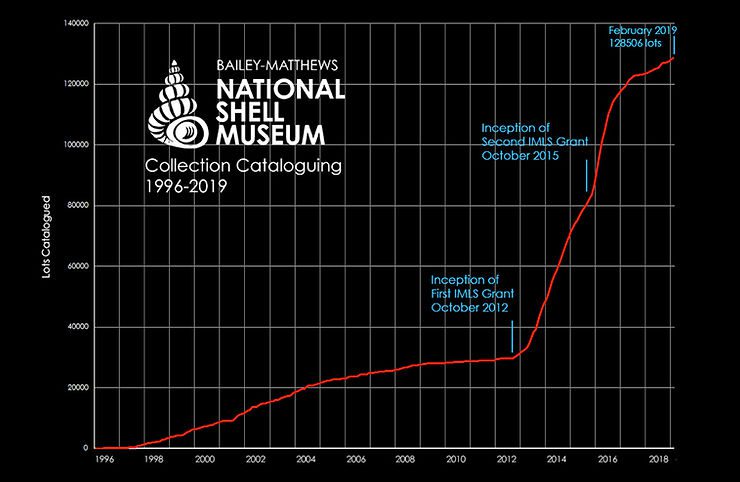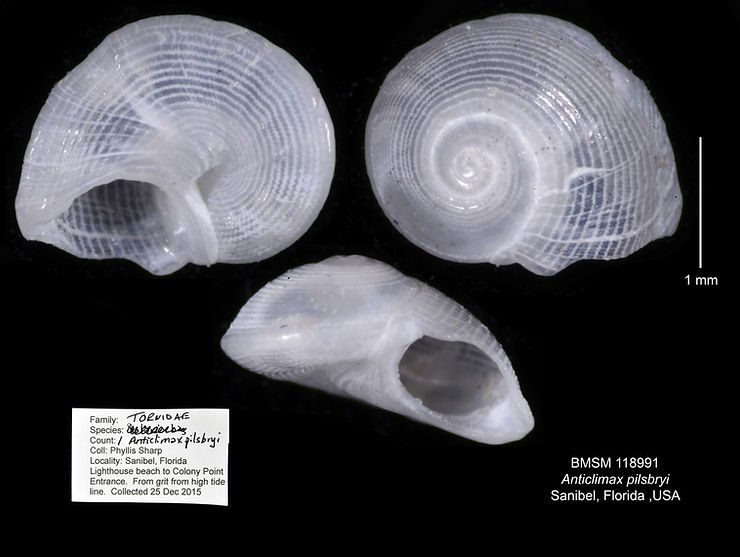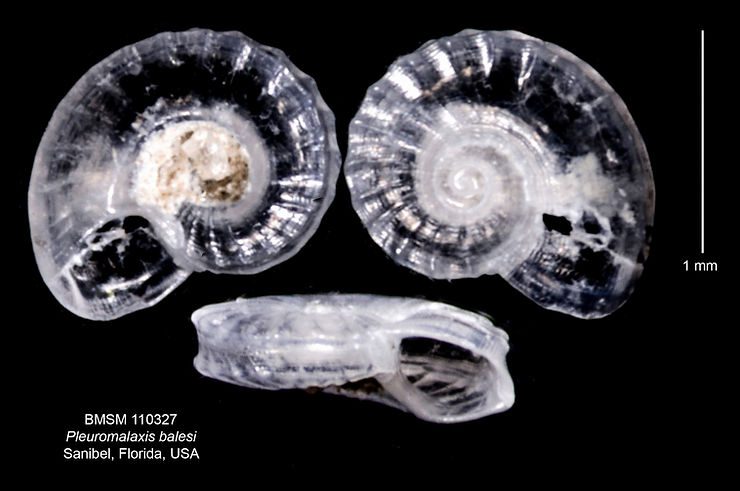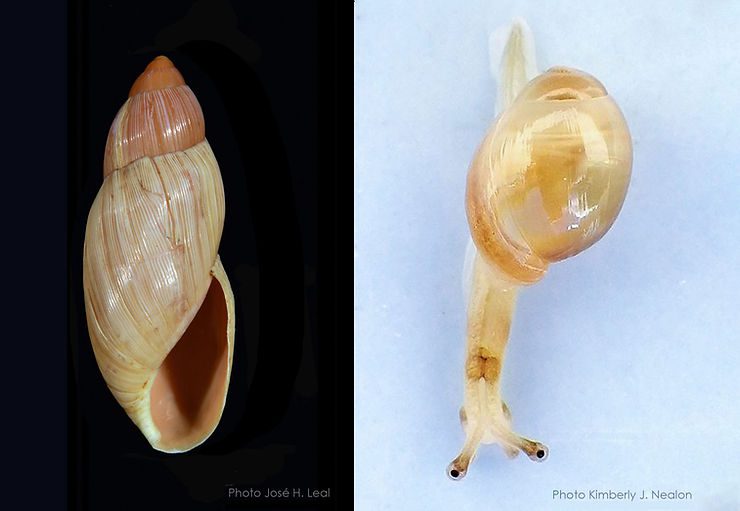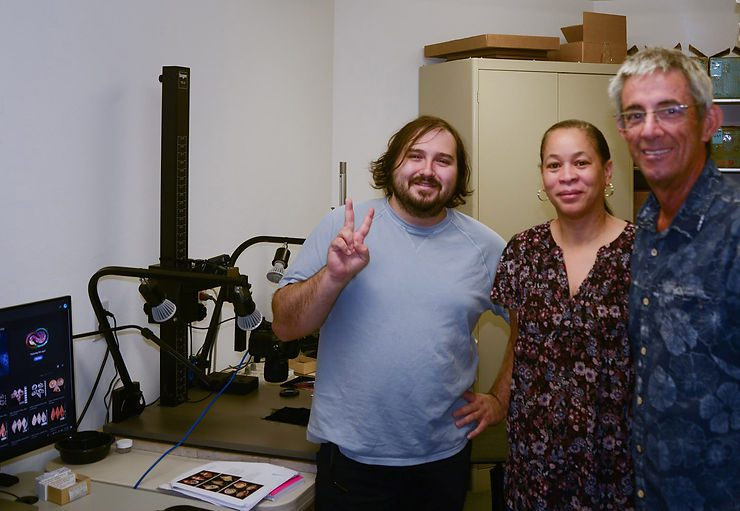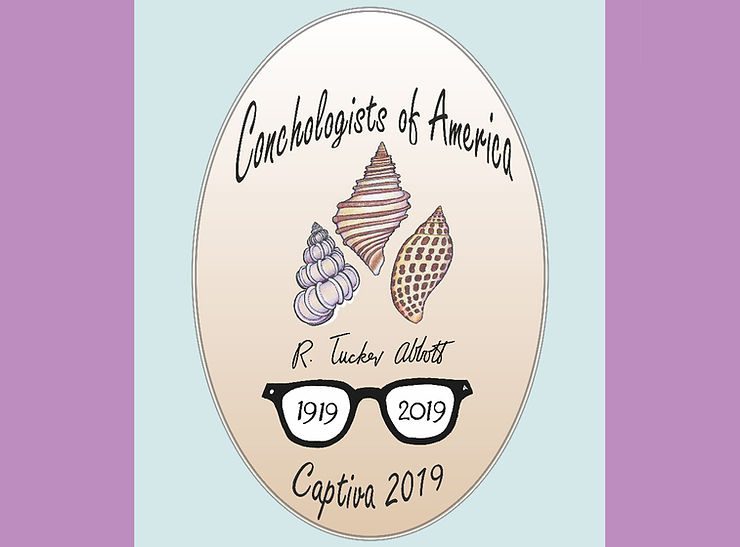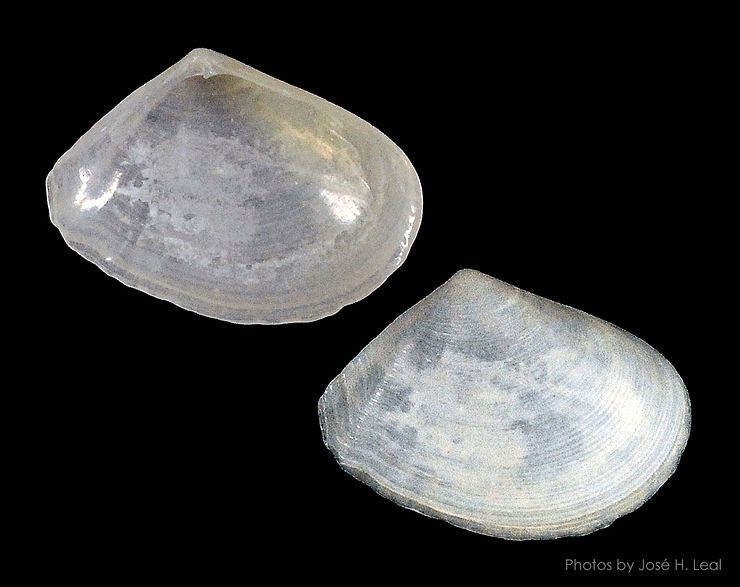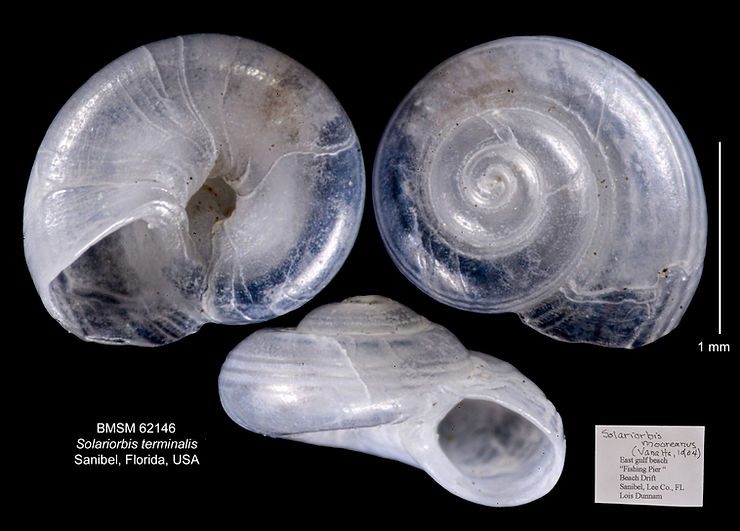
Shell of the Week: The Terminal Vitrinella
Originally described from Destin, on the Gulf Coast of Florida, Solariorbis terminalis (Pilsbry & McGinty, 1946) is yet another member of the microgastropod family Tornidae found also along the coast of Southwest Florida. Larger shells of the species reach only 2.5 mm (about 0.1 inch). The shell has a low spire, the suture is well-defined, and the last whorl is rounded at the periphery (outer shell “edge”). The sculpture includes 4–5 spiral cords along the shell periphery. The aperture is rounde

